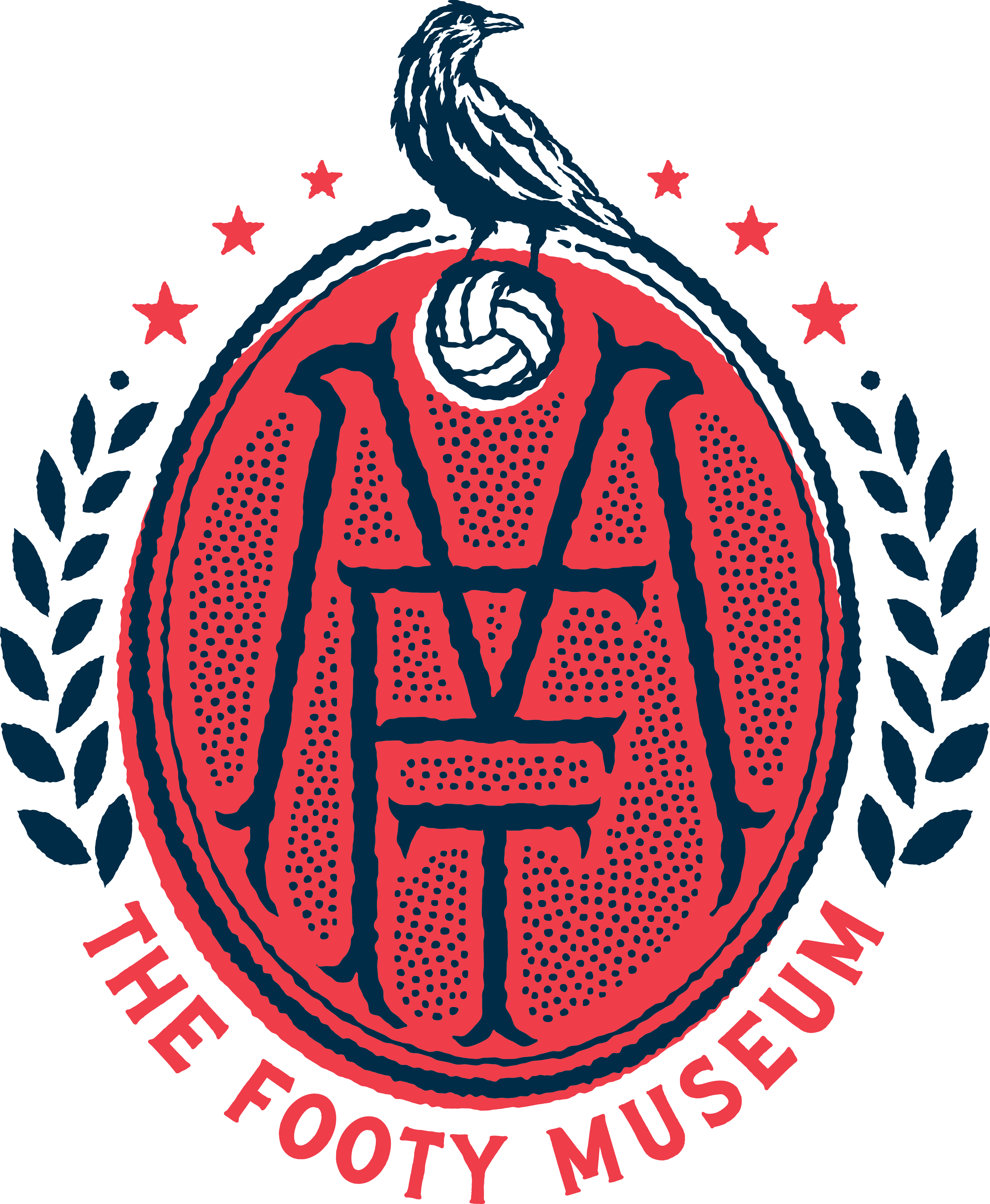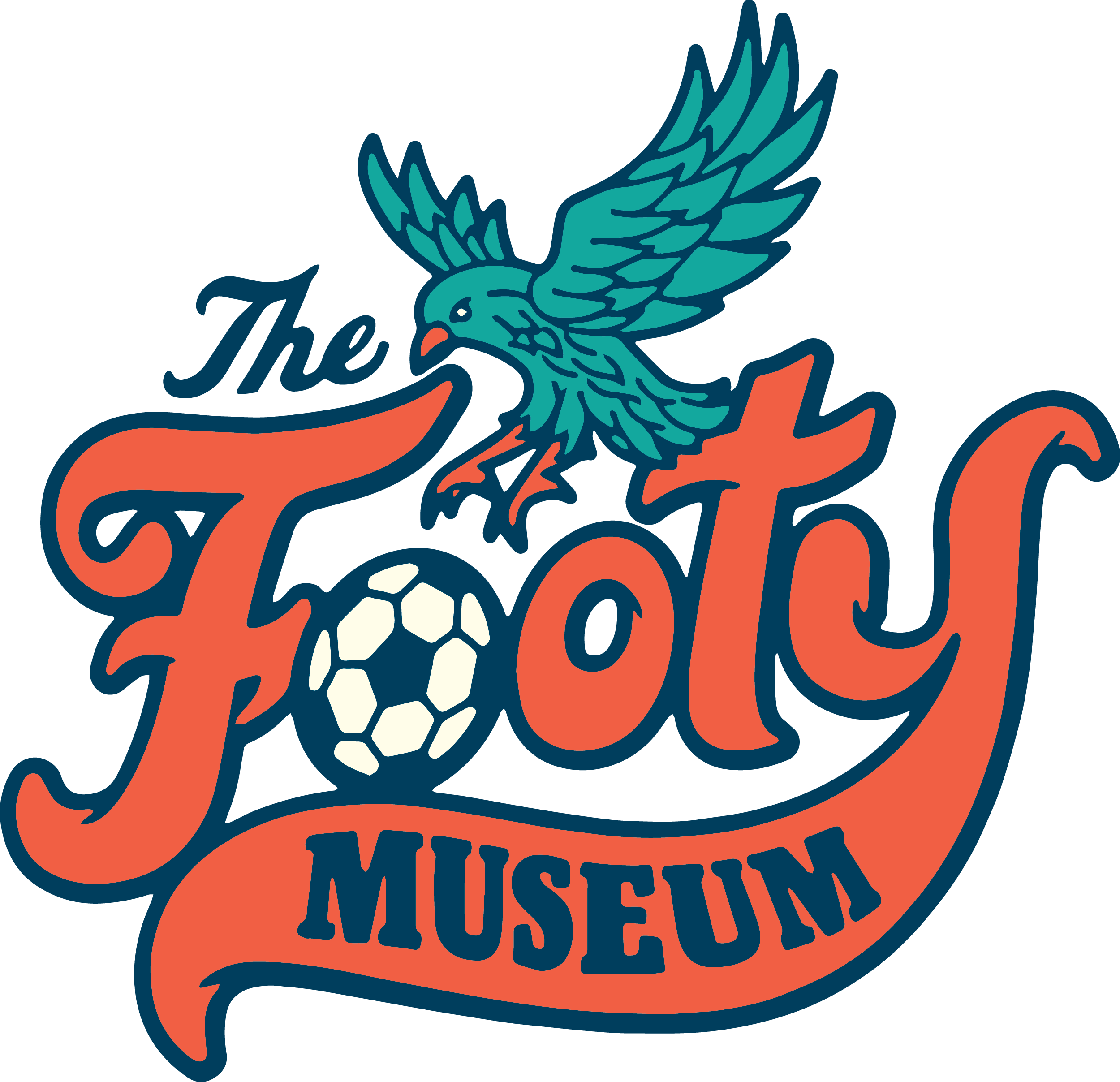OUR HISTORY
Every club has a history, and The Footy Museum is no exception. Read all about how we could have possibly, maybe, conceivably began.
WHERE TO BEGIN?
Based in Chicago, the Footy Museum began in 2022 as a project between Maria Van Dyken Li and Justin Witte. Their aim is to share the many amazing stories and histories that surround the world’s game through innovative exhibitions and programming.
One of the initial inspirations for the Footy Museum was Maria and Justin’s shared love for the history behind football crests. The crests they admired most all share a common trait: they evoke the spirit of the era in which they were created.
In 2023, when Maria and Justin approached Delicious Design League to create the museum’s first official logo, the designers proposed something much more ambitious. Instead of just one logo, Delicious suggested developing a visual identity that captured the type of history that they were drawn to. Thus, the Footy Museum Mythology was born.
For those curious about how an imagined 100-year history of the Footy Museum might have unfolded, Delicious Design League’s design briefs are available to read here, followed by the full (imagined) "Footy Story."
-
A classic European crest, think Spanish and Italian clubs like Madrid or old Juventus. Ornate monogram lettering and laurels with a sophisticated navy and red palette. Introduce The Footy Museum mascot: the Raven.
-
Post-war, American varsity. Something that wouldn’t look out of place on a sweatshirt under a letterman jacket. The red updated to orange to introduce a mid-century vintage feel.
-
Bubble letters and astro turf. A text-heavy logo evoking the designs of indoor soccer leagues. Similar colors to the 50s version with slight updates.
-
Perspective, pastel, and flaming balls. Everything you love to hate about the 90s.
-
A modern take on the old classic. This crest calls back to the earliest design with its oval shape, laurels, and matching color palette.
-
Ravens appear in many folklore traditions as symbols of intelligence, transformation, destruction and creation.
THE FOOTY MUSEUM STORY
1909
Dutch immigrants Kip Van Dyken and Casper Witte open “Kip and Caspers,” a small grocery store in the Douglas Park neighborhood of Chicago. That same year, British soccer club The Pilgrims arrive in Chicago as a stop on their exhibition tour of the United States. Kip and Casper capitalize on the neighborhood excitement by creating a store display featuring the favorite tobacco pipes of well-known local footballers.
They call the display "The Footy Museum”, and advertise it with an oval emblem crested by a black bird in honor of Casper's pet raven "Raaf," who lives in the rafters of the store.
1920s-30s
After 16 years at the Kedzie Avenue location, Kip and Casper lease a dedicated storefront on Milwaukee Ave for The Footy Museum. The museum survives the Great Depression thanks to Kip’s homemade tonic, served from a makeshift speakeasy accessed through the broom closet.
1939-1945
Kip and Casper retire, handing off operations of The Footy Museum to their niece, Betty Eikenhout. With many men called to war, Betty forms a women's team sponsored by the museum. The traveling team plays exhibition matches, pioneering the popularity of women's soccer in the U.S.
1950s-1960s
The Footy Museum relocates to a permanent location in the Portage Park neighborhood of Chicago. Hoping to draw attention from new fans, the museum redesigns its logo to better align with booming post-war American culture. Unfortunately, many young Chicagoans see the museum as a curiosity from a bygone era. The museum manages to stay open due to sales of stylish bespoke jerseys created by Julia Walker Lomanaco, but only just.
1972
Betty Eikenhout steps down as director, and William Bauman takes over The Footy Museum. Bauman brings the brand into the 70s by revamping the logo and turning focus to the emerging world of indoor soccer. He titles his first exhibit “Astro Dreams: The Future of Football in the United States.”
1980s
The Footy Museum once again faces financial difficulties. Bauman resorts to renting the space for events in order to make ends meet. After a particularly destructive coke-fueled breakdancing competition, the city revokes the museum’s operating license, and it loses its physical location.
1997 - 2006
After almost a decade in storage, the establishment of a Chicago-based major league soccer franchise leads to the revival of The Footy Museum. The club ask Bauman to relaunch an exhibition space in their downtown stadium as a tribute to the legacy of soccer in the city.
2006
The major league franchise relocates to the Chicago suburbs, leaving The Footy Museum behind.
2022
Maria VanDyken Li and Justin Witte, of no relation to Kip and Casper, revive The Footy Museum. With a focus on the history, design, and culture surrounding the game, The Footy Museum now curates exhibitions that are available for institutions to rent.







